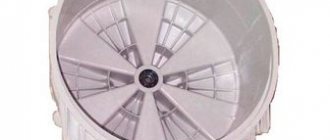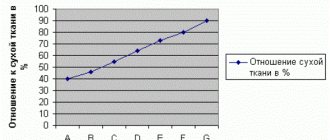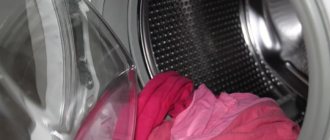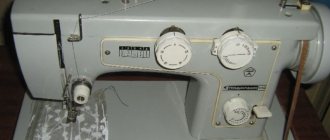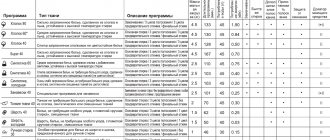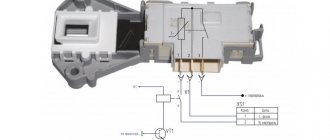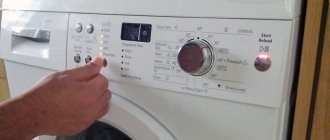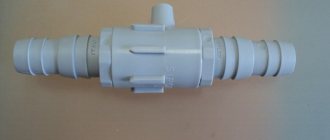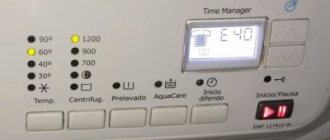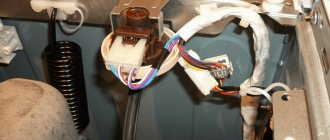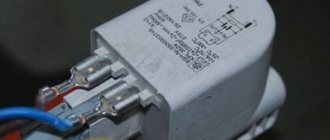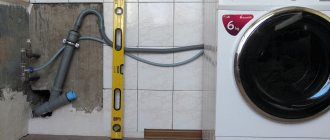What is the electricity consumption class?
The higher the class, the more efficiently the device uses the energy consumed, but because of this it is also more expensive. This parameter is one of the main indicators of the quality of household appliances. If you are looking for an economical washing machine, be sure to look at its energy efficiency rating. To make the choice easier for consumers, experts have developed a seven-point letter classification system for washing machines, which can be used to evaluate:
- quality of washing;
- spin quality;
- level of power consumption.
Until 2010, the classification from A to G was adopted, later a new scale began to be used - from A+++ to D. The methodology for establishing energy efficiency was also changed. To determine, compare the consumption of water and electricity under different conditions:
- when fully loaded;
- with incomplete loading;
- at different water temperatures throughout the year - on average 220 cycles are taken into account.
To make it easier for consumers to navigate the numbers, manufacturers came up with a classification of SMA based on energy efficiency. A multi-colored sticker is glued to the front panels of the equipment. Thanks to the pictures, the information is understandable to a native speaker of any language. The energy efficiency gradation is shown in different colors.
Necessity of classes and order of definition
The power of any electrical appliance is indicated in watts. Sometimes it happens that a simple layman cannot navigate the notation. To make the task easier, manufacturers have developed a classification based on the level of electricity consumption. Taking into account the energy consumed, the washing machine has a letter designation. From the table below it follows what class of device will consume how much energy when washing a kilogram of clothes:
| letter marking | energy consumption per 1 kg of things, kW/h |
| A++ | 0.15 |
| A+ | 0.15 – 0.17 |
| A | 0.17 – 0.19 |
| IN | 0.19 – 0.23 |
| WITH | 0.23 – 0.27 |
| D | 0.27 – 0.31 |
| E | 0.31 – 0.35 |
| F | 0.35 – 0.39 |
| G | from 0.39 |
It should be noted that class determination testing was performed under special conditions. The readings may increase due to the modes you set.
To determine the class of electricity consumption, you need to carry out simple steps. The energy efficiency value is determined using two values - the power of the washing machine for a certain period of time and its maximum load of things. From this ratio, an indicator is obtained that helps to establish the power consumption class of the unit.
For example, you have a machine with a power of 0.8 kW/h and a loading volume of 4 kg. The desired result is 0.2. It follows that your device belongs to class B.
How to determine the energy consumption class?
The problem is solved by relating actual and reference costs. Different models, having equal energy consumption, may belong to different energy consumption groups. It depends on how rationally they use water and how many revolutions they produce. That is why, when choosing an automatic washing machine (AWA), you need to look at all the characteristics in a comprehensive manner. Each device has a sticker informing the consumer about:
- energy efficiency;
- brand and model;
- annual energy consumption, kWh;
- annual water costs, l;
- spin and drying class A-G;
- maximum load, kg;
- noise, dB.
Today, the majority of SMAs offered on the market have energy consumption class A or B. If the equipment is marked with the letters F or G, it does not deserve attention - its quality can be characterized as bad and very bad, respectively. Devices with energy consumption classes D and E - normal and satisfactory - are rarely found on the market. Before assigning energy saving classes to SMA for each parameter - washing, spinning, energy efficiency - a comparison is made with the standard.
What are the energy consumption classes for a washing machine?
A series of energy consumption classes have emerged. For their marking, the Latin letters A, B, C, D, E, F, G are used. The highest level of energy saving includes class A and class B. Currently, A+, A++ and A++ have joined the existing sequence +.
The newest washing machines are much more economical than their predecessors. The energy consumption of these devices is 10–30% more economical. Progress, after all, also strives for rational and careful use of energy resources. The developers were able to achieve maximum efficiency in ultra-modern washing machines. Classes C, D and E have acquired a moderate level of energy saving; a lower level belongs to class F and class G.
Energy consumption classification of washing machines:
| Energy class | Consumption kWh/kg |
| A+++ | Less than 0.13 |
| A++ | 0,13-0,15 |
| A+ | 0,15-0,17 |
| A | 0,17-0,19 |
| B | 0,19-0,23 |
| C | 0,23-0,27 |
| D | 0,27-0,31 |
| E | 0,31-0,35 |
| F | 0,35-0,39 |
| G | More than 0.39 |
Excellent operating quality of the washing machine is ensured with the highest washing class. Washing machines of energy consumption class A, A+, A++ and A+++ are recognized as the most economical. Developers monitor this index and strive to make the production of advanced devices even more energy efficient.
The differences between wash class A and B are so minimal that they cannot be seen visually. It is not advisable to purchase a machine with a washing class lower than C. With insignificant material savings, there is a risk of not achieving the desired washing quality. Class E washing machines are no longer produced, so they cannot be found among the new generation of appliances. It’s not often you come across a class F or G car, and there’s no point in taking them. The results of washing in such a machine are unlikely to please you. The washing efficiency of higher class machines will be much better, and the price will be slightly more expensive.
What is the standard?
The standard for assessing the capabilities of equipment is not a simple SMA, but a special installation with stable performance indicators. The device under study is compared with the reference one. To evaluate the washing ability of the model, special reference rags are washed. To estimate energy consumption, find out how much electrical energy is consumed during a test wash. Tests are carried out at a temperature of 60 °C. Loading: 1 kg of cotton fabric.
Based on the test results, the obtained indicators are compared with the reference ones, and the SMA is assigned the appropriate group. The energy consumption table allows you to determine how much energy the device spends in 1 hour when loading 1 kg of cotton fabric. To find out the energy costs when the drum is loaded, you need to multiply the corresponding power consumption (it is indicated in the energy consumption table) by the weight of the laundry.
| Consumption class | Power consumption, kW/h per kg |
| A (A+++, A++, A+) | 0,13-0,17 |
| IN | 0,17-0,19 |
| WITH | 0,23-0,27 |
| D | 0,27-0,31 |
| E | 0,31-0,35 |
| F | 0,35-0,39 |
| G | more than 0.39 |
Review of energy consumption classes, calculation of their values
Each washing machine model represents a certain energy consumption class:
| Class | Energy efficiency indicator, kW/h/kg |
| A++ | less than 0.17 |
| A+ | 0,15 — 0,17 |
| A | 0,17 — 0,19 |
| IN | 0,19 — 0,23 |
| WITH | 0,23 — 0,27 |
| D | 0,27 — 0,31 |
| E | 0,31 — 0,35 |
| F | 0,35 — 0,39 |
| G | over 0.39 |
To determine the energy consumption class, you should perform simple manipulations. The value of the energy efficiency indicator is calculated using two values: the power (kW) of the machine per unit of time (per hour) and the maximum load of the machine with laundry (kg). From their ratio, you can obtain a value that will determine the energy consumption class of the device.
For example, if we consider a machine with the following parameters: 0.8 kW/h and 4 kg of load, the result will be 0.8/4 = 0.2. Accordingly, the device represents group B of equipment. If the obtained value is outside the specified limits, then the machine will be designated by the letter A or C, depending on the obtained indicator.
How to choose?
The reference wash performance is not the only criterion for energy consumption. SMA modifications are distinguished by optimization of the programmable mode. For example, if you need to wash heavily soiled clothes, a machine with energy efficiency group C will spend 2.4 hours. And its more economical competitors from group A will wash the same thing in just 2 hours. Thanks to this, savings are achieved: better means faster. The less time the machine spends on washing, the less electricity it costs.
Manufacturers are constantly improving technology, equipment is becoming more and more efficient. If before 2010 there was only efficiency A, today it is divided into A+, A++ and A+++ - SMAs with such icons consume 10, 30 and 50% less, respectively.
Energy-efficient washing machines are more expensive - is it worth the overpayment? Considering their service life, it’s worth it. Budget versions last at least 5 years, good ones - 15-20 years. During this time, you can save a lot of energy.
Washing machine energy consumption class table
| Electricity consumption classes | Power consumption |
| The machine marked “A++” is the most economical at the moment. | It needs less than 0.15 kW/h per kg of washed items. |
| The next most economical class will be “A+”. | He will please us with a demand that will be below 0.17 kW/h per kilogram of laundry. |
| Next in the table are washing machines with the designation “A”. | These examples of home appliances are limited to 0.17-0.19 kWh per kilo . |
| If you see the energy consumption symbol “B” on the sticker... | This means that the machine can “eat” from 0.17 to 0.19 kWh per kilogram of things. |
| The next class is “C”. | Units that correspond to it require 0.23-0.27 kW/h for the same kilogram of laundry. |
| " D " marking will tell you that... | The washing machine will work hard, using 0.27-0.31 kWh per kilo of fabric washed. |
| What does the “E” ? | The only thing is that 0.31-0.35 kW/h per kg of things is the normal requirement of this device. |
| Class " F" found on the label... | It will inform us that for this washing machine the norm is 0.35-0.39 kW/h per kg . |
| Class " G" is the last and most wasteful of the existing classifications. | Such machines will require more than 0.39 kW/h per kilogram of laundry to be washed. |
It is very unlikely that you will find household appliances that were produced in our time and which are assigned the “G” class. After all, most modern manufacturers strive to reduce the consumption of manufactured electrical appliances.
What affects power consumption?
- Mode. The longer the wash cycle and the hotter the water, the higher the energy consumption.
- Loading. The more laundry the SMA washes, the more energy it uses.
- Life time. As it is used, scale deposits on the heating element - the efficiency of the heating element decreases, it cannot heat water as efficiently as before. Electricity costs are rising. To prevent overconsumption and preserve the heating element, use descaling agents in a timely manner.
It is difficult to accurately calculate costs, and it is not necessary - the main thing is to choose an economical machine.
Energy consumption classes
The power consumption of washing machines is calculated practically. The calculation was based on a full cycle of washing cotton laundry at a temperature of 60 o C and a loaded weight of 6 kg.
The classes indicate the efficiency index “C” for the use of electricity (kW/hour per 1 kilogram). The European Community has developed an energy efficiency scale from letter “A” to letter “G”.
“A” and “B” are the most energy-saving classes. “C”, “D” and “E” are average in terms of energy savings. "F" and "G" are the lowest available.
| Energy efficiency of standard household washing machines | |
| Efficiency class | Index |
| A | C ≤ 0.19 |
| B | 0.19 < C ≤ 0.23 |
| C | 0.23 < C ≤ 0.27 |
| D | 0.27 < C ≤ 0.31 |
| E | 0.31 < C ≤ 0.35 |
| F | 0.35 < C ≤ 0.39 |
| G | 0.39 <C |
The best options today are “A+++”, “A++” and “A+”.
They provide maximum washing and energy efficiency.
| Super energy efficient models | |
| Efficiency class | Index |
| A+++ | C ≤ 0.13 |
| A++ | C ≤ 0.15 |
| A+ | C ≤ 0.17 |
A separate class is characterized by washing machines with the function of drying things.
The calculation is based on the same cotton cycle used by standard machines and the same index.
| Energy efficiency of household washing machines with drying function | |
| Efficiency class | Index |
| A | C < 0.68 |
| B | C < 0.81 |
| C | C < 0.93 |
| D | C < 1.05 |
| E | C < 1.17 |
| F | C < 1.29 |
| G | C > 1.29 |
Model overview
To ensure your SMA uses electricity economically, pay attention to its efficiency. Let's see what the market offers and how washing machines belonging to the middle price category have proven themselves.
The following are the most rated models in their groups.
Electrolux EWW 51476 WD - “B”
Modification with drying - up to 4 kg. There are 3 drying programs. Touch control. Backlit display. Direct drive - the device operates quietly. The body is white. Timer - up to 20 hours. 49/75 dB - noise level. There is a compartment for liquid powder.
Specifications:
| Energy consumption, kW*h/kg | 0,14 |
| Maximum load, kg | 7 |
| Spin speed rpm | 1400 |
| type of instalation | freestanding |
| Load Type | frontal |
| Tank material | plastic |
| Energy class | IN |
| Washing class | A |
| Spin efficiency class | IN |
| Water consumption, l | 52 |
| Number of programs | 10 |
| Dimensions, (WxDxH), cm | 60x52x85 |
| Weight, kg | 68,4 |
| Cost, rubles | 42 000 |
| Drying | No |
Users praised:
- quiet operation;
- good drying;
- simple controls.
Noticed disadvantages:
- vibrates a little during the spin cycle;
- small load if wash and dry;
- Ineffective steam function.
There are many complaints about breakdowns - electric shocks, the pump, heating element, etc. break. The main advantage of this model is dry laundry at the exit. It is because of this function that it belongs to group “B”. Drying clothes on a line or sacrificing energy costs - everyone decides for themselves.
Indesit IWUB 4085 - “A”
A narrow white model with a removable lid - can be built under the sink or into furniture. Intelligent control. Delay timer - up to 12 hours. Noise during washing/spin - 59/76 dB. The hatch diameter is 30 cm.
| Energy consumption, kW*h/kg | 0,15 |
| Maximum load, kg | 4 |
| Spin speed rpm | 800 |
| type of instalation | freestanding |
| Load Type | frontal |
| Tank material | plastic |
| Energy class | A |
| Washing class | A |
| Spin efficiency class | D |
| Water consumption, l | 39 |
| Number of programs | 13 |
| Dimensions, (WxDxH), cm | 60x33x85 |
| Weight, kg | 66 |
| Cost, rubles | 10 800 |
| Drying | No |
Benefits according to users:
- Many useful programs;
- Compact - shallow depth;
- Easy to operate;
- Affordable price;
- Express mode for 15 minutes;
- Shoe mode;
- Repairable.
Flaws:
- There is no express mode in hot water;
- Vibrates during the spin cycle;
- Poorly distributes things during the spin cycle;
- It takes a long time to wash and consumes a lot of electricity.
The main complaints about this model stem from its relatively low energy efficiency - long washing times, high energy consumption.
Samsung WF8590NLW9 - “A+”
There is a removable cover for installation. With intelligent control. White body. Noise - 60/74 dB. Ceramic heater.
| Energy consumption, kW*h/kg | 0,17 |
| Maximum load, kg | 6 |
| Spin speed rpm | 1000 |
| type of instalation | freestanding |
| Load Type | frontal |
| Tank material | plastic |
| Energy class | A+ |
| Washing class | A |
| Spin efficiency class | WITH |
| Water consumption, l | 48 |
| Number of programs | 8 |
| Dimensions, (WxDxH), cm | 60x45x85 |
| Weight, kg | 53 |
| Cost, rubles | 15 700 |
| Drying | No |
This model is praised for its ease of operation and trouble-free operation. Samsung products, as always, are at their best - the Koreans, introducing their own energy-saving technologies, produce some of the most economical models. Users noted with approval the following points:
- Auto-weighing;
- Adjustment of temperature and speed;
- No vibrations.
Owners especially like the flexibility of settings - if you don’t have the right program, you can select the basic functions yourself. The disadvantages are that it is difficult to reach the filter, short hoses, and only partial protection against leaks.
LG F-1296TD4 - “A++”
With removable cover for installation. Silver body. Delayed start timer - 19 hours. Noise level - 54/65 dB.
| Energy consumption, kW*h/kg | 0,17 |
| Maximum load, kg | 8 |
| Spin speed rpm | 1000 |
| type of instalation | freestanding |
| Load Type | frontal |
| Tank material | plastic |
| Energy class | A++ |
| Washing class | A |
| Spin efficiency class | IN |
| Water consumption, l | 56 |
| Number of programs | 13 |
| Dimensions, (WxDxH), cm | 60x55x85 |
| Weight, kg | 62 |
| Cost, rubles | 24 600 |
| Drying | No |
Users like this machine for its spaciousness, stylish design, economical water consumption, uniform distribution of laundry, silent operation and the ability to wash large items. The disadvantage noted is rather subjective - it is an irritating signal. Also a disadvantage is the lack of memory, which does not allow you to save custom programs.
From A+++ to G: energy efficiency classes of household appliances
During the implementation phase, energy efficiency classes were designated by symbols A to G on a colored background (green to red). This marking is easy to decipher: the closer the letter is to the beginning of the alphabet, the more efficient the device’s energy consumption
. Subsequently, it was possible to exclude the symbols E, F and G from most categories due to their withdrawal from the market due to high wastefulness and introduce a couple of new indices: A+, A++ and A+++, identifying devices with maximum energy efficiency.
| The place of the wasteful symbols E, F and G in the marking of energy efficiency classes has been taken by the more current indices A+, A++ and A+++. |
A mark indicating the energy efficiency class of household appliances is placed on refrigerators, dishwashers, washing and drying machines, ovens, hoods, televisions, air conditioners, vacuum cleaners, water heaters and even some types of light bulbs (with a luminosity of 6500 lumens and a power of over 4 W). You can find the treasured letter on an information sticker or in the characteristics of a particular device (including using filters to search in household appliance catalogs). The Energy Label sample has been approved by the European Association of Household Appliance Manufacturers (CECED). The main thing on them is the indication of the energy consumption class on the corresponding color background.
At the same time, the label indicates the key performance characteristics of the equipment, which vary depending on the category of device. For different groups of equipment, the energy efficiency scale is calculated according to different criteria. We will look at them:
Refrigerators and freezers
Food storage plays one of the most important roles in the house. Their energy consumption is important like no other. The thing is that refrigerators and freezers work non-stop, i.e. 24 hours a day, 7 days a week. The energy efficiency indicator of refrigerators is calculated taking into account the volume of the chambers, the minimum possible temperature inside them and the presence of additional options in the device.
It may well be that some giant refrigerator, although it consumes more electricity than its compact counterpart, nevertheless belongs to a higher class of energy efficiency.
The Energy Label also contains information about the brand and model of the refrigeration unit, annual energy consumption, internal volumes of the freezer and refrigerator compartments, and noise level in decibels. The most energy efficient refrigerators Liebherr CNP 4813 from RUR 41,500. Liebherr CNP 4313 from RUR 38,500 Liebherr CNPef 4813 from RUR 47,300 Liebherr CNPel 4813 from RUR 43,500 Liebherr K 4330 from 64,376 rub. Gorenje OBRB 153 BL from RUR 87,356 Liebherr CNPef 4313 from RUR 43,290 Liebherr SBSes 8496 from RUR 402,500 Liebherr CNPel 4313 from RUR 41,515 Liebherr CBNes 4898 from RUR 195,900 Liebherr SBNes 4285 from 180,400 rub. Liebherr CNPes 4868 from RUR 117,890 Smeg FAB28LRD5 from RUR 118,740 Liebherr CBNPes 4858 from RUR 119,500 Liebherr SKBes 4370 from RUR 148,770 Smeg FAB28LCR5 from RUR 118,740 Smeg FAB32RCR5 from RUR 161,800 Liebherr SKBes 4380 from 175,100 rub. Liebherr SKBbs 4370 from RUR 148,770 Liebherr CBNPes 4878 from RUR 159,000
Dishwashers
The calculation of the energy efficiency class of dishwashers is based on the ratio of actual electricity consumption to standard, which directly depends on the number of sets of dishes loaded into the device. also influenced by the efficiency classes of the washing and drying cycles separately
. The European Energy Label for dishwashers is marked with symbols A+++ to D.
In addition to the traditional model and energy efficiency class, the sticker informs the user about the annual energy consumption (kW/year), drying quality class (from A to G), nominal load (number of standard cutlery sets) and noise level in decibels.
The most energy efficient dishwashers
Vestfrost WVDWF424T01W from RUR 39,990 Gorenje GS620C10S from RUR 33,803 Asko DFS 244IB S/1 from RUR 68,900 Asko DFS 244IB W/1 from RUR 61,655 Vestfrost VFDWF606T01W from RUR 41,699 Indesit DFO 3T133 AF from 39,000 rub. AEG FFB 72527 ZW from RUR 52,999 AEG FFB 72527 ZM from 54,001 rub. Smeg LVFABCR from RUR 152,390 Miele G 6000 SC from RUR 84,900 Smeg LVFABBL from 146,000 rub. Smeg LVFABPB from RUR 143,990 Smeg LVFABRD from RUR 143,990 Electrolux ESF 5545 LOX from RUR 49,990
Washing machines
For a group of “washing machines”, the energy efficiency class is determined by the ratio of power consumed per hour to the maximum weight of loaded laundry
. Previously, the label also included data on the washing efficiency class, however, according to the new CECED rules, all washing machines with a load of more than 3 kg of laundry are required to have the only possible washing class A.
Related information on the label includes the full name of the washing machine model, annual energy and water consumption, maximum load of laundry (in kg), spin efficiency class (from A to G), noise level during washing and spinning (separately for each procedure).
The most energy efficient washing machines
Haier HW 60-BP10929A from RUR 22,600 Electrolux PerfectCare 600 EW6S4R06W from RUR 21,300 Electrolux PerfectCare 600 EW6T4R262 from RUR 32,900 LG F2J6WS0W from RUR 26,410 Bosch WAT 286H2 from RUR 50,800 LG AI DD F4V5VS9B from RUR 35,977 Hisense WFVB 7012M from RUR 15,380 LG AI DD F2V9HS9W from RUB 31,900 Electrolux PerfectCare 600 EW6T5R061 from RUR 27,399 Gorenje WEI 62 SDS from RUR 27,380 AEG L 6SE26SRE from RUR 28,400 Samsung WW90T4041CE from RUR 24,180 Haier HW 60-BP12959A from RUR 23,900 LG AI DD F4V5VS0W from RUR 33,220 Beko SteamCure RSPE 78612 W from RUR 17,510 Indesit EWUC 4105 from RUR 12,640 Samsung WW60J30G0LW from RUR 22,050 Electrolux PerfectCare 600 EW6S3R26SI from RUR 25,900 Midea MWT70101 Essential from RUR 21,150 Bosch WAT 20441 from RUR 49,909
Dryers
Close relatives of washing machines can be marked with one of three stickers: for models with ventilated drying, condenser drying and rare models powered by gas, their own version of the label is provided
. For example, the energy efficiency class of condensation dryers is determined based on information about the energy consumption of the machine when running the “Cotton” program with a full and partial load, as well as in standby mode and in a completely off state.
A set of extended information on the tag contains data on the brand of the dryer, its type, annual energy consumption, the duration of the “Cotton” program at maximum load of laundry, full load (in kg), noise level in decibels and moisture condensation efficiency class (symbols from A to G).
The most energy efficient dryers
LG DC90V9V9W from RUR 67,900 Samsung DV90T5240AT from RUR 46,800 Bosch WTX 87EH1 from RUR 76,990 Samsung DV90T6240LX from RUR 50,000 Siemens WT 47XEH1 from 84,900 rub. Electrolux PerfectCare 900 EW9H1R89B from RUR 92,900 Asko T408HD from RUR 94,810 Electrolux PerfectCare 900 EW9H1R88SC from RUR 95,800 Smeg DHT83L from RUR 64,199 Weissgauff WD 599 DC from RUR 54,000 Samsung DV90T8240SH from RUR 63,400 Asko T608HX W from RUR 113,905 AEG T9DBA68SC from RUR 107,990 AEG T8DEC68S from 76,400 rub. Asko T409HS W from RUR 107,160 Miele TWF 640 WP from RUR 104,900 Samsung DV90N8289AW from RUR 57,690 Miele TCR 870 WP from RUR 225,000 Miele TCE 520 WP from RUR 84,900 Miele TWV 680 WP from RUR 271,000
Ovens
One of the central places in most kitchens is the oven. Its energy efficiency class is determined based on the power and volume of the oven chamber.
Models with an internal volume of less than 18 liters, as well as ovens with a microwave function and steam ovens are not subject to marking.
Along with the energy efficiency scale on the label, you can see data on the name of the oven model, electricity consumption per cycle in static heating mode and in convection mode (kWh), useful internal volume of the oven in liters.
The most energy efficient ovens
KuchenChef KBE660X from RUR 10,260 KuchenChef KBE640X from RUR 11,990
Hoods
The list of kitchen appliances that are subject to mandatory “branding” is completed by hoods. The energy labeling system for them was adopted not so long ago - in 2014.
The label on the hood can tell you both about quite obvious things (model name and energy efficiency class of the device) and about a number of useful performance characteristics. The pictrograms on the sticker contain information about the annual energy consumption at a typical load, efficiency classes for removing evaporations from the hob, lighting and grease collection, as well as the noise level during operation of the hood (measured in decibels).
TVs
In everyday life, television is still the center of attraction for household members and the multimedia center of the home. Its energy efficiency is calculated as the ratio of power consumption to screen area
.
The energy efficiency scale contains information about the presence of a switch on board the device to completely de-energize the device, indicators of energy consumption in standby mode and for the year in the on state are indicated, and finally, the bottom of the sticker contains information about the diagonal of the TV display.
Air conditioners
With climate control technology, which provides coolness in the hot summer heat and warms with warm air currents in the off-season, things are somewhat more complicated. It all depends on the set of operating modes (cooling with or without heating), the type of cooling (air or water) and the configuration of the air conditioner
(split and multi-split systems, two-channel and single-channel systems with forced ventilation, etc.). Air conditioner efficiency measurements are made at outside temperatures from +20 °C to +35 °C (in increments of 5 °C), and for the heating mode, the climatic zone in which the equipment is supposed to be operated is taken into account.
A set of additional information on the label includes information about the annual electricity consumption, the type of air conditioner, its power when operating for heating and cooling, and the noise level of the outdoor and indoor units.
The most energy efficient (cooling) air conditioners
Mitsubishi Electric Premium MSZ-LN25VG/MUZ-LN25VG from RUR 84,300 Mitsubishi Heavy Premium SRK25ZS-W from RUR 31,000 Funai Emperor Inverter RACI-EM25HP.D03 from RUR 43,584 Midea BreezeleSS+ FA-12N8D6-I/FA-12N8D6-O from RUR 52,300 Haier Flexis AS25S2SF1FA/1U25S2SM1FA from RUR 59,900 Midea BreezeleSS+ FA-09N8D6-I/FA-09N8D6-O from RUR 50,100 Haier Flare HSU-09HFM103/R3(SDB) from RUB 39,990. Mitsubishi Electric Premium MSZ-LN35VG/MUZ-LN35VG from RUR 98,000 Kentatsu YUMO KSGY26HZRN1/KSRY26HZRN1 from RUR 32,500 Mitsubishi Electric Deluxe MSZ-FH25VE/MUZ-FH25VE from RUR 81,400 Mitsubishi Electric Deluxe Zubadan MSZ-FH25VE/MUZ-FH25VEHZ from RUR 89,390 Cooper&Hunter Supreme Continental CH-S09FTXAL from RUR 60,444 Cooper&Hunter Nordic Premium CH-S12FTXN-PW from 68,000 rub. Panasonic Etherea Inverter+ CS/CU-Z25TKEW from 67,100 rub. Mitsubishi Heavy Premium SRK20ZS-W from RUR 28,500 Haier Flexis HSU-09HFM03/R3 from RUR 39,990 Daikin Perfera FTXM25R/RXM25R from 88,000 rub. Cooper&Hunter Nordic Premium CH-S09FTXN-PW from 63,800 rub. Mitsubishi Electric Design MSZ-EF25VGK/MUZ-EF25VG from RUR 73,400 Haier Flexis AS35S2SF1FA/1U35S2SM1FA from RUR 69,500
Vacuum cleaners
Home front cleaners are among the appliances for which energy efficiency labeling was introduced in 2014. It looks like this:
The data on the label includes the appliance's annual energy consumption, indoor dust re-emission class (A to G), noise level in decibels, and cleaning efficiency classes for hard floors and carpets.
respectively.
Water heaters
Energy labeling is used both for autonomous boilers and boilers, and for complex devices
which are supposed to be used in combination with additional heating equipment. The sticker for devices of this type covers, perhaps, the maximum possible parameters.
The marking on the label with the water heater contains information about the brand and model of the product, the presence of heating and water heating functions in the device’s assets, the seasonal energy efficiency class of water heating for heating and the hot water supply circuit, the rated thermal power and the generated noise level in decibels.
As you can see, each type of household appliance has its own specifics. Our advice to you: focus on devices of class A and higher
. By paying attention to the energy efficiency indicator when choosing home appliances, you can furnish your home with economical models, thus reducing energy costs in the foreseeable future.
